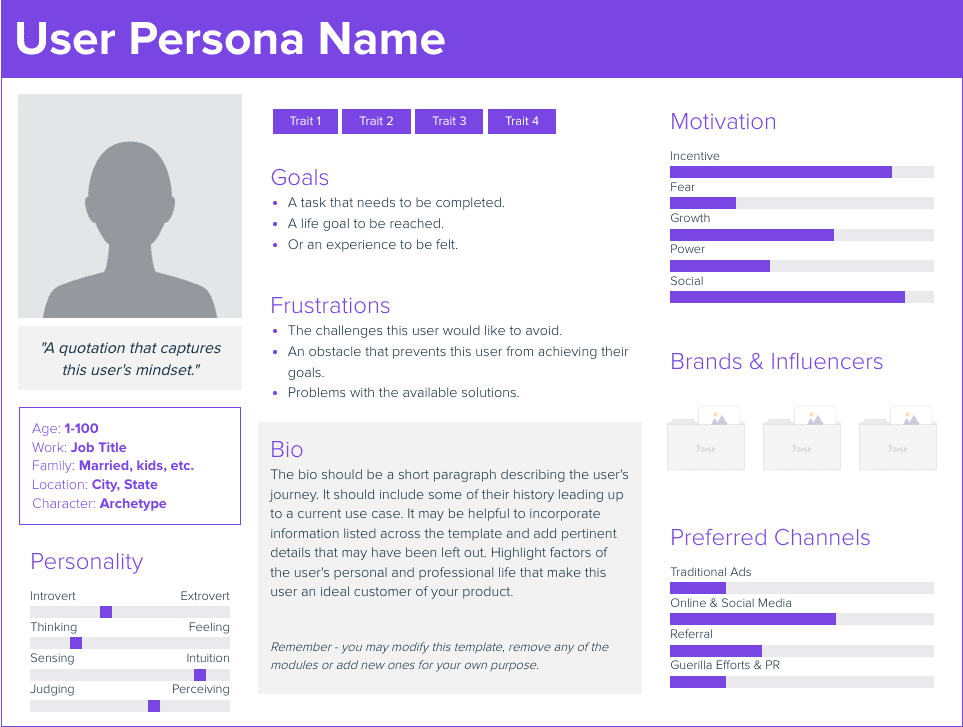In my last article, I explained the importance of brand strategy, what it means for nonprofits, the benefits of starting a strong strategy, and the different approaches to effective implementation. In this article, we’ll explore the power of branding for nonprofits and why it’s crucial for their success. As well as delve into the key elements of effective nonprofit branding, like forming the visual identity, segmenting and narrowing down the target audience, and community engagement.
Building a Strong Nonprofit Brand Strategy
The identity
Brand identity refers to the unique characteristics and values distinguishing an organization from others. It is how the organization presents itself to the public and people’s feelings and perceptions.
Nonprofit brand identity includes several key elements, including:
- Mission, vision, and values: A clear statement of the nonprofit’s purpose, long-term goals, and guiding principles.
- Visual identity: The design elements that represent the nonprofit, including the logo, color palette, typography, and other design elements.
- Tone of voice: The style and language used in the nonprofit’s messaging and communication should align with its values and mission.
- Unique value proposition: What makes the nonprofit unique and different from others in the same space?
- Personality and culture: The organization’s personality and values help to shape its identity and culture.
By defining its brand identity, a nonprofit can establish a consistent and recognizable presence that resonates with its target audience and builds stakeholder trust and credibility. It also helps to create a unified voice and a clear sense of purpose that guides the nonprofit’s decision-making and communication strategies.
SEGMENTATION + TARGETING = CRAFTING YOUR AUDIENCE
Positioning creates a distinct identity, a differentiator from competitors. Implementing a positioning statement communicates your unique identity, target audience, and value proposition. Nonprofits should position themselves as experts in their field and communicate their expertise through content marketing, thought leadership, and other marketing tactics. First, you want to segment your market. This means dividing up the total market into smaller ones to wholly focus on things that you determine to be important in your marketing efforts. Your segmentation efforts can be:
- Geographic: communities, cities, states, countries, or globally. Additional factors, such as region and population density, can be included here. If you serve communities in Eastern North Carolina, you may want to implement an outreach program to all the rural areas and the nearby cities.
- Demographic: age, social class, income, education, occupation, gender, family size, race, and ethnicity. This segment pulls together groups in a formal category and is the most common based on the correlation of their needs and wants.
- Psychographic: personalities, lifestyles, values, attitudes, interests, and opinions; this is a unique segment as it can pull people from different ages or regions into this category.
- Behavior: separating individuals into groups based on knowledge, use, or responsiveness concerning a product or service. An example of this would be if a consumer one brand over another based on the enhanced benefits it provided.
Next, you will need to determine how to go about analyzing your target audience(s):
- Researching who would benefit from the solutions you provide and who would admire your goals and ambitions.
- Utilize surveys, focus groups, social media, and website analytics to gain insights into their needs, interests, and values.
- Develop targeted messaging and a visual identity that resonates with the target audience on a deeper level.
Target markets typically are divided up into three different categories, (1) primary, (2) secondary, (3) tertiary. These categories determine who you will be actively communicating with the most.
Once you’ve developed an idea of your target audience(s), build your buyer personas. Buyer personas profiles are generated around your ideal customer, crafted from demographics, psychographics, values, pain points, and interests—all around the person who would benefit from your services. These tools help form every communication piece, the tone of your efforts, and the solutions your organization answers. Xtensio offers a free tool to craft your buyer personas.

Anytime there is a change in your organization’s services or new avenues you wish to pursue, use the steps above to ensure you’re hitting the mark on your target audience(s), and then revisit your personas and update them as needed.
Craft Messaging and Content
Develop clear, concise, and compelling messaging that communicates your nonprofit’s impact and resonates with your target audience. Create content that aligns with your brand messaging and engages your audience, such as blog posts, social media content, email campaigns, and videos. These are also known as your communication channels, the way you offer and deliver value to your audience. Four key aspects to keep in mind:
- Define your key messages: Identify the most important messages you want to communicate to your audience. These might include your mission statement, key statistics about your impact, or messages that highlight what makes your organization unique.
- Know your audience: To create messaging that resonates with your audience, you need to understand who they are, what they care about, and what motivates them. This is where your market research and audience segmentation speak directly to your target groups.
- Keep it simple: Messaging must be concise and easy to understand. Use clear language and avoid complex or technical terms that may confuse your audience.
- Use storytelling: People are likelier to engage with your nonprofit if you tell stories that bring your impact to life. Use storytelling to show your work’s real-world impact and connect with your audience emotionally.
Ensure that your content is consistent with your brand messaging and reflects the values and mission of your organization. Creating compelling content that resonates with your target audience can build stronger relationships with your supporters and drive greater engagement with your nonprofit.
Implement and Monitor Branding Success
Measuring your nonprofit branding efforts’ success is crucial for understanding your brand strategy’s impact and adjusting as needed. Nonprofits can measure the success of their branding efforts by tracking metrics such as:
- Website Traffic
- Utilize Google Analytics to gain insights on traffic down to the granular level with metrics like bounce rates, user sessions, and new and returning visitors. The following are examples of metrics that can be measured to determine organizational goals.
- Social Media Engagement
- Donor and Volunteer Retention Rates
- Long-term support from your communities is critical for keeping your nonprofit alive. Determine the measurement period (monthly, quarterly, or annually—or any other interval that suits your organization’s needs)—tracking donor and volunteer retention rates by reviewing your databases, donation records, and volunteer hour logs through a spreadsheet or another management system of your choice.
By analyzing these metrics, nonprofits can gain insights into the effectiveness of their messaging and visual identity and adapt as needed to improve their impact.
Nonprofit Branding Best Practices
Your voice is everything. You’ve come this far; let’s make that brand shine. Some best practices for success:
- Be authentic: Building trust with your audience means being authentic. Be honest about your nonprofit’s mission, impact, and values. Don’t try to be something you’re not.
- Develop a strong visual identity: The face of your nonprofit is your visual identity. Develop a logo, color scheme, and typography that reflects your nonprofit’s mission and values.
- Use consistent messaging: Consistent messaging is crucial to building a solid brand. Develop messaging that communicates your nonprofit’s impact and resonates with your target audience. Use this messaging consistently across all your communication channels.
- Engage your supporters: Engage your supporters in your nonprofit’s brand by asking for their input and feedback. Engaging can help to build a sense of ownership and community around your nonprofit’s brand.
- Be responsive: Be responsive to feedback and criticism. Use feedback to improve your nonprofit’s brand and messaging.
- Be active on social media: Social media is a powerful tool for building your nonprofit’s brand. Use social media to share your nonprofit’s impact, engage with your audience, and build a community around your brand.
Branding Mistakes to Avoid in Nonprofit Organizations
Branding mistakes can also confuse supporters and stakeholders, making it more difficult for them to understand the nonprofit’s mission and impact. Additionally, branding mistakes can result in a lack of consistency across communication channels, which can diminish the effectiveness of the nonprofit’s messaging and weaken its brand. Several common branding mistakes that nonprofits should avoid are:
- Failing to define a clear mission and values.
- Creating a visual identity inconsistent with the organization’s brand identity.
- Using messaging that is too generic or fails to communicate the organization’s impact.
- Failing to engage with donors and volunteers.
- Neglecting to track and measure the impact of branding efforts.
- Failing to adapt to changes in their target audience or the broader social and political landscape.
Conclusion
In conclusion, branding is crucial for nonprofits that want to stand out in a crowded marketplace and achieve their goals. By creating a strong brand identity that reflects their mission and values, nonprofits can attract and retain donors, volunteers, and other supporters who are passionate about their cause. Effective nonprofit branding involves creating a clear and compelling message, developing a visual identity consistent with the organization’s brand identity, and engaging with its community of supporters. By following best practices and avoiding common branding mistakes, nonprofits can create a lasting impact and positively impact society!
Resources
Need more guidance on how to build up your brand?
These articles are tailored to give you all the insight, tips, and tools you need.
Power of Branding for Nonprofits: Why It’s Crucial for Success
Invest in this One Online Design Tool to Level Up Your Organization’s Visual Game
Brand Consistency and 3 Small Things Your Organization Can Do to Establish (or Improve) Yours Before Close of Business Today

